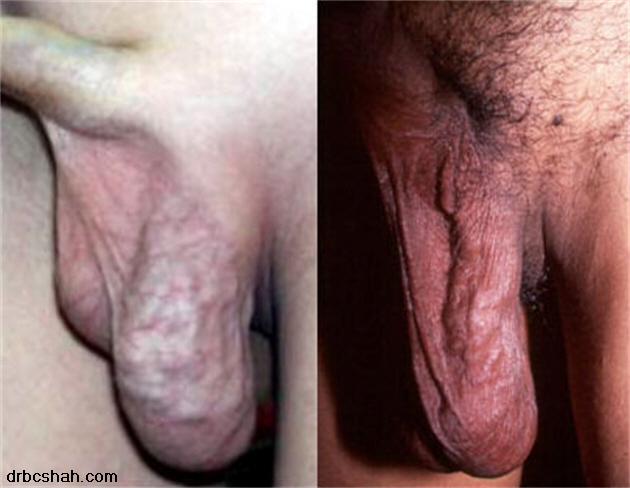Varicocele
A varicocele is a widening of the veins along the cord that holds up a man’s testicles (spermatic cord).
Causes, incidence, and risk factors
A varicocele forms when valves inside the veins along the spermatic cord prevent blood from flowing properly. This causes the blood to back up, leading to swelling and widening of the veins. (This is essentially the same process that leads to varicose veins, which are common in the legs.)
Varicoceles usually develop slowly. They are more common in men ages 15 – 25 and are most often seen on the left side of the scrotum.
The sudden appearance of a varicocele in an older man may be caused by a kidney tumor, which can block blood flow to a vein. This is more common on the left side than the right.
Symptoms
- Enlarged, twisted veins in the scrotum
- Painless testicle lump, scrotal swelling, or bulge in the scrotum
There may not be symptoms.
Signs and tests
Dr. B C Shah will examine the groin area, including the scrotum and testicles. He may feel a twisted growth along the spermatic cord. (It feels like a bag of worms.)
However, the growth may not be able to be seen or felt, especially when you are lying down.
The testicle on the side of the varicocele may be smaller than the one on the other side.
Treatment
A jock strap (scrotal support) or snug underwear may help relieve the pain or discomfort. If pain continues or other symptoms occur, you may need further treatment.
Surgery to correct a varicocele is called varicocelectomy. You will leave the hospital on the same day as your surgery. During this procedure, you will receive some type of numbing medication (anesthesia). The urologist will make a cut, usually in the lower abdomen, and tie off the abnormal veins. Blood will now flow around the area into normal veins. Keep an ice pack on the area for the first 24 hours after surgery to reduce swelling.
An alternative to surgery is varicocele embolization. This method is also done without an overnight hospital stay. It uses a much smaller cut than surgery, so you will heal faster. A small hollow tube called a catheter (tube) is placed into a vein in your groin or neck area.
Using x-rays as a guide, Dr. B C Shah moves the tube into the varicocele. A tiny coil passes through the tube into the varicocele. The coil blocks blood flow to the bad vein, and sends it to normal veins.
After the procedure, you will be told to place ice on the area and wear a scrotal support for a little while.
Expectations (prognosis)
A varicocele is usually harmless and often does not need to be treated.
If you have surgery, your sperm count will likely increase but it will not improve your chances of getting a woman pregnant. In most cases, testicular wasting (atrophy) does not improve unless surgery is done early in adolescence.
Complications
Infertility is a complication of varicocele.
Complications from treatment may include:
- Atrophic testis
- Blood clot formation
- Infection
- Injury to the scrotum or nearby blood vessel


 Dr. Bimal Shah is the senior most General & Laparoscopic surgeon in Mira – Bhayandar with largest series of operations. He also consults at Borivali – Dahisar. He believes in ethical practice & is available at only trust hospitals. He passed out from KEM hospital, Mumbai in 1993 and was a lecturer training newer surgeons & medical students till 1998.
Dr. Bimal Shah is the senior most General & Laparoscopic surgeon in Mira – Bhayandar with largest series of operations. He also consults at Borivali – Dahisar. He believes in ethical practice & is available at only trust hospitals. He passed out from KEM hospital, Mumbai in 1993 and was a lecturer training newer surgeons & medical students till 1998. 







